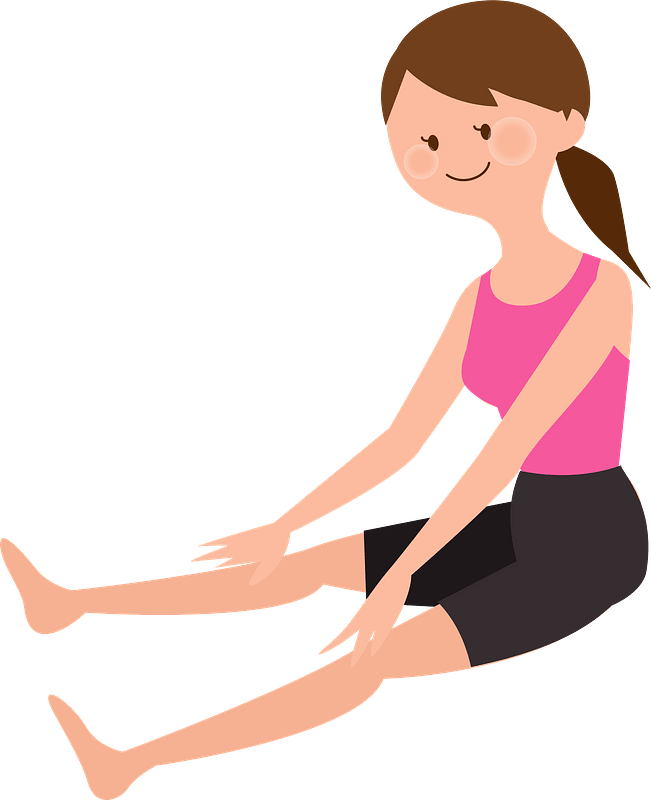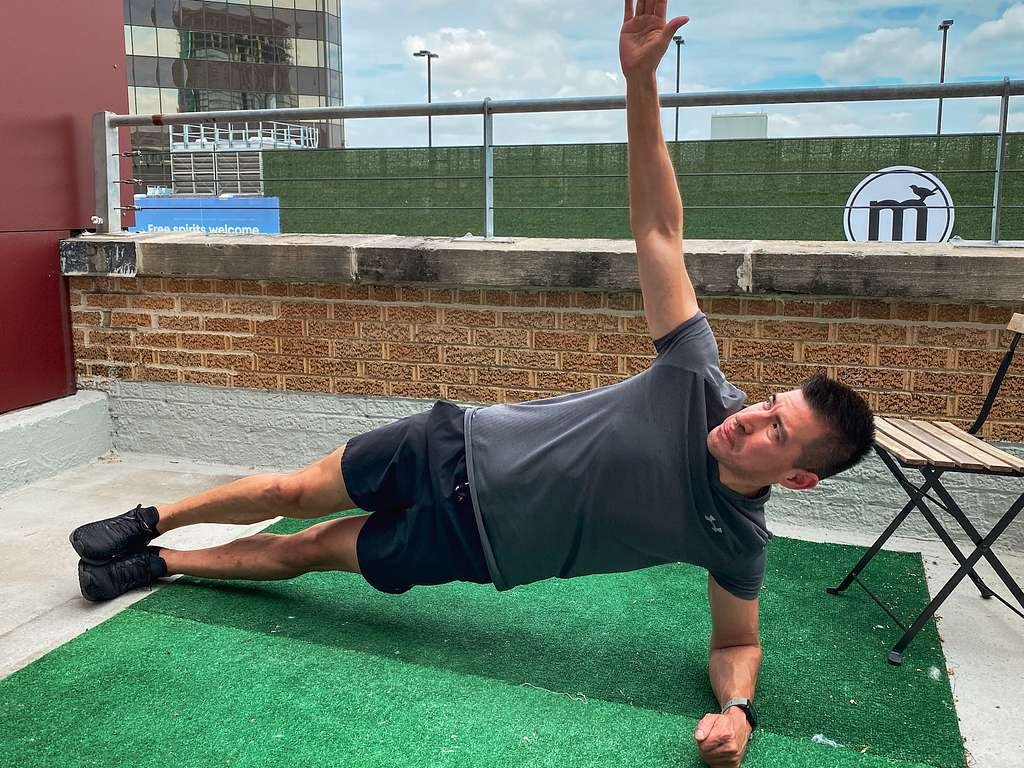Knee Protection While Exercising: Elevate Your Workouts Safely! Your fitness journey is about to get a whole lot better. We all know the importance of staying active, but are your knees getting the care they need? In this guide, we’ll dive into the world of knee protection during exercise, ensuring you can push your limits without worrying about injuries. Let’s jump right in and make your workouts stronger, safer, and more enjoyable!
Table of Contents
Understanding the Importance of Knee Protection While Exercising
The importance of knee protection while exercising cannot be overstated. The knees are vulnerable joints that bear a significant amount of weight and stress during physical activities. Without proper protection, the knees are at risk of injury, which can lead to pain, inflammation, and long-term damage. Wearing knee pads or braces can provide added support and stability, reducing the risk of strain or impact-related injuries. Additionally, using proper form and technique during exercise, such as maintaining proper alignment and avoiding excessive stress on the knees, can further protect this crucial joint. Investing in knee protection is essential for anyone who engages in regular exercise or sports activities to ensure the longevity and health of their knees.
Common knee injuries
Common knee injuries are a prevalent concern for many individuals who engage in regular exercise. The knees are highly susceptible to injuries due to their complex structure and the amount of stress they endure during physical activities. Some of the most common knee injuries include ligament sprains, meniscus tears, and patellar tendonitis. Ligament sprains occur when the ligaments connecting the bones in the knee joint are stretched or torn, leading to pain, swelling, and instability. Meniscus tears, on the other hand, involve the tearing of the rubbery cartilage in the knee, often resulting in pain, swelling, and difficulty in moving the joint. Lastly, patellar tendonitis is the inflammation of the patellar tendon, which connects the kneecap to the shinbone. This condition causes pain and tenderness around the knee area, especially during activities that require repetitive knee movements. Understanding these common knee injuries is crucial for individuals seeking to protect their knees while exercising.
Benefits of knee protection
Knee protection plays a vital role in ensuring the safety and well-being of individuals during exercise. By wearing knee protection, individuals can minimize the risk of injuries and strains to their knees. It provides stability and support to the knee joint, allowing for a greater range of motion and flexibility. Additionally, knee protection helps to reduce the impact and stress on the knee, especially during high-impact activities such as running or jumping. By protecting the knee from excessive pressure and impact, it helps to prevent long-term damage and promotes overall joint health. Overall, the benefits of knee protection are undeniable, making it an essential accessory for anyone engaging in physical activities.
Choosing the Right Knee Protection

Understanding your exercise routine
Understanding your exercise routine is crucial for ensuring the effectiveness and safety of your workouts. When it comes to knee protection while exercising, it is important to pay attention to the type of exercises you are performing and the impact they have on your knees. Certain exercises, such as running or jumping, can put a lot of strain on your knees, increasing the risk of injury. To protect your knees, it is recommended to incorporate exercises that strengthen the muscles around the knee joint, such as squats and lunges. Additionally, using proper form and technique during exercises can also help reduce the risk of knee injuries. Remember to listen to your body and take breaks when needed to avoid overexertion. By understanding your exercise routine and taking necessary precautions, you can ensure that your knees stay protected and healthy while exercising.
Types of knee protection
There are several types of knee protection available to help prevent injuries while exercising. One common type is knee sleeves, which provide compression and support to the knee joint. Another option is knee braces, which offer a higher level of stability and protection. Knee pads are also commonly used, especially in sports that involve a lot of kneeling or impact on the knees. Additionally, there are knee wraps that can be used for added support during heavy weightlifting exercises. It is important to choose the right type of knee protection based on the specific activity and level of support required.
Factors to consider when choosing knee protection
When choosing knee protection for exercising, there are several factors to consider. Firstly, it is important to assess the level of impact and support required for your specific activity. For high-impact exercises such as running or jumping, knee sleeves or braces with added padding may be necessary. Secondly, the fit and comfort of the knee protection should be taken into account. It should be snug enough to provide stability and support, but not too tight to restrict movement or cause discomfort. Additionally, the material of the knee protection should be breathable and moisture-wicking to prevent excessive sweating and discomfort during workouts. Lastly, consider the durability and quality of the knee protection. Investing in a well-made and durable product will ensure long-lasting support and protection for your knees. By considering these factors, you can choose the right knee protection that will help prevent injuries and enhance your performance while exercising.
Proper Form and Technique

Importance of proper form
Proper form is essential when it comes to protecting your knees while exercising. By maintaining the correct posture and alignment during your workouts, you can significantly reduce the risk of injury to your knees. When performing exercises such as squats, lunges, or jumping exercises, it is crucial to keep your knees in line with your toes and avoid any excessive inward or outward movement. Additionally, engaging the correct muscles and using proper technique can help distribute the load evenly and prevent undue stress on your knees. Remember, practicing proper form not only helps protect your knees but also allows you to get the most out of your workouts and achieve better results.
Exercises to improve knee stability
Exercises to improve knee stability are essential for individuals who want to protect their knees while exercising. These exercises focus on strengthening the muscles around the knee joint, improving balance, and enhancing overall stability. Some effective exercises include squats, lunges, step-ups, and leg presses. These exercises help to build strength in the quadriceps, hamstrings, and glutes, which are crucial for maintaining proper knee alignment and reducing the risk of injury. Additionally, incorporating exercises that target the core and hip muscles can further enhance knee stability. It is important to start with light weights or bodyweight exercises and gradually increase the intensity and difficulty level as strength and stability improve. By regularly performing these exercises, individuals can significantly reduce the likelihood of knee injuries and enjoy a safe and effective exercise routine.
Tips for maintaining proper technique
Maintaining proper technique while exercising is crucial for preventing injuries, especially when it comes to protecting your knees. Here are some tips to help you maintain proper technique and keep your knees safe. First, make sure to warm up properly before starting any exercise routine. This helps to increase blood flow to the muscles and prepares them for the workout. Additionally, pay attention to your form and posture during exercises. Keep your knees aligned with your toes and avoid any excessive inward or outward movements. It’s also important to listen to your body and take breaks when needed. Pushing through pain or fatigue can put unnecessary strain on your knees. Lastly, don’t forget to stretch and cool down after your workout to help prevent muscle tightness and promote recovery. By following these tips, you can ensure that you’re taking the necessary steps to protect your knees while exercising.
Stretching and Warm-up

Benefits of stretching
Stretching is an essential component of any exercise routine, and it offers numerous benefits for knee protection. First and foremost, stretching helps to improve flexibility and range of motion in the knee joint. This increased flexibility can prevent injuries by allowing the knee to move more freely during exercise. Additionally, stretching helps to increase blood flow to the muscles surrounding the knee, which can aid in the recovery and repair process. Lastly, regular stretching can help to alleviate muscle tightness and imbalances that may contribute to knee pain or discomfort. By incorporating stretching into your exercise routine, you can enhance knee protection and promote overall joint health.
Effective warm-up exercises
Effective warm-up exercises are essential for knee protection while exercising. These exercises help to increase blood flow to the muscles, warm up the joints, and prepare the body for more intense physical activity. Some effective warm-up exercises for knee protection include leg swings, walking lunges, and knee circles. By incorporating these exercises into your workout routine, you can reduce the risk of knee injuries and ensure a safe and effective workout session.
Stretching routines for knee protection
Stretching is an important aspect of knee protection while exercising. By incorporating stretching routines into your workout routine, you can improve flexibility, reduce muscle tightness, and enhance joint range of motion. Stretching before and after exercise can help warm up the muscles and prepare them for the physical activity, while also aiding in the recovery process. It is recommended to focus on stretches that target the muscles surrounding the knees, such as quadriceps, hamstrings, and calves. Remember to perform each stretch slowly and hold for 15-30 seconds, without bouncing or jerking. Including stretching routines in your exercise regimen can contribute to maintaining healthy knees and preventing potential injuries.
Common Mistakes to Avoid

Overtraining and pushing too hard
Overtraining and pushing too hard can be detrimental to your knee health while exercising. When you push your body beyond its limits and don’t give it enough time to rest and recover, you increase the risk of injury to your knees. It’s important to listen to your body and take breaks when needed. Incorporating proper warm-up and cool-down routines, as well as using knee protection such as braces or wraps, can also help minimize the strain on your knees during intense workouts. Remember, it’s better to take it slow and steady than to push yourself too hard and end up with knee problems.
Neglecting rest and recovery
Neglecting rest and recovery is a common mistake that many people make when it comes to knee protection while exercising. It is important to give your body enough time to rest and heal after intense workouts or activities that put stress on your knees. Without proper rest, your knees may become overworked and more prone to injuries. Additionally, neglecting recovery techniques such as stretching, foam rolling, and icing can also contribute to knee problems. Therefore, it is crucial to prioritize rest and recovery as part of your knee protection routine to maintain healthy and strong knees.
Ignoring pain and discomfort
Ignoring pain and discomfort while exercising can have serious consequences for our knees. It is important to listen to our bodies and address any discomfort immediately. Pushing through the pain may seem like a sign of strength, but it can lead to long-term damage and chronic issues. By ignoring pain, we are putting our knees at risk of injury and limiting our ability to engage in physical activities. It is crucial to prioritize knee protection and take necessary precautions to ensure a safe and effective workout routine.
Additional Tips for Knee Protection

Wearing proper footwear
Wearing proper footwear is essential for knee protection while exercising. The right shoes provide stability and support, reducing the risk of injury to the knees. It is important to choose shoes that fit well and have good cushioning to absorb shock. Additionally, shoes with a non-slip sole can help prevent falls and further protect the knees. By wearing proper footwear, individuals can ensure that their knees are well-supported and protected during exercise.
Using knee braces and supports
Using knee braces and supports can provide additional stability and protection to the knees while exercising. These braces are designed to help prevent injuries and reduce pain by providing support to the ligaments and joints. They can be particularly beneficial for individuals with weak or unstable knees, as well as those recovering from knee injuries. Knee braces and supports come in a variety of styles and sizes, allowing users to choose the one that best suits their needs. It is important to consult with a healthcare professional or a physiotherapist to determine the most appropriate type of knee brace or support for individual needs and to ensure proper usage and fit.
Listening to your body
When it comes to exercising, it is crucial to listen to your body. Your body has an incredible ability to communicate its needs and limitations. Paying attention to any discomfort, pain, or fatigue is essential to prevent injuries and ensure a safe workout. Pushing through pain or ignoring warning signs can lead to serious consequences. It is important to understand that everyone’s body is unique, and what works for one person may not work for another. By listening to your body, you can make informed decisions about when to push harder and when to take a break. Remember, your body is your best guide when it comes to protecting your knees and overall well-being during exercise.
